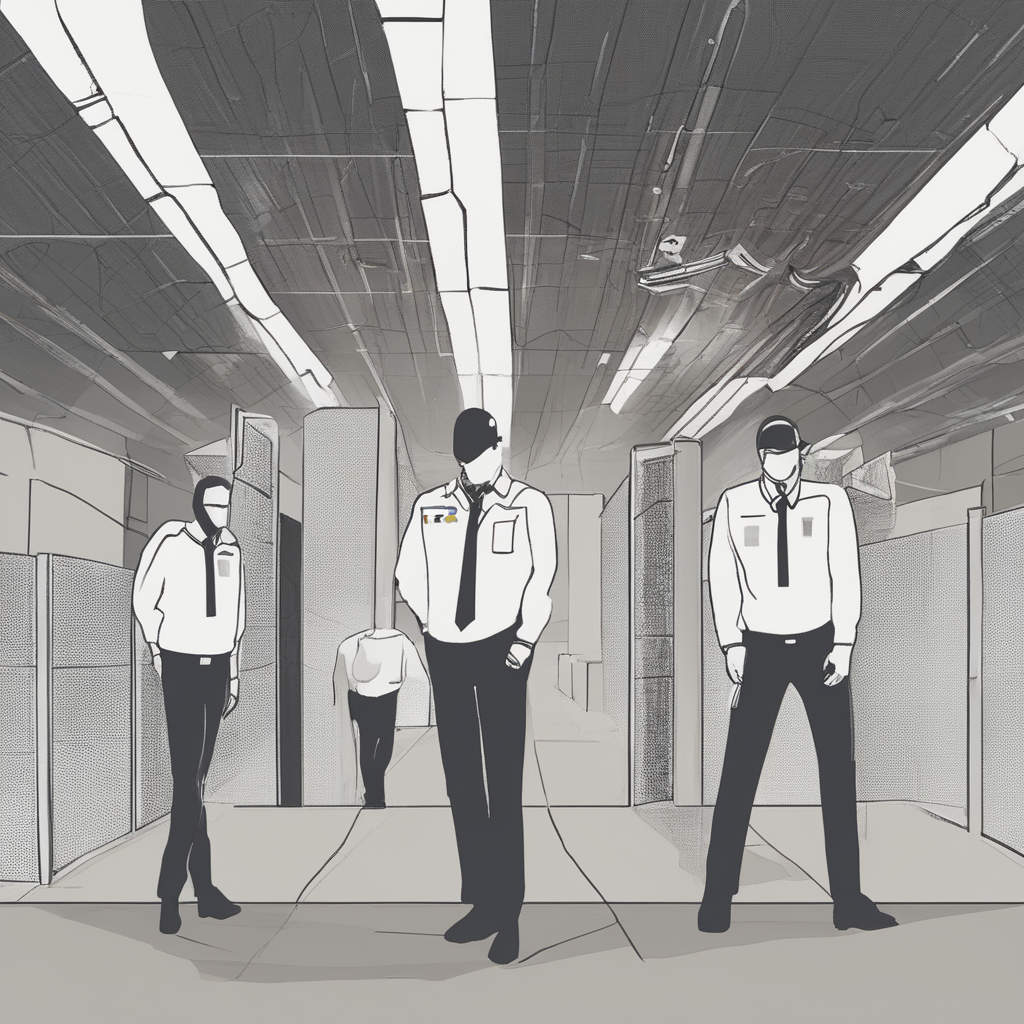 Piergiorgio Venuti
Piergiorgio Venuti
Security posture analysis: Complete guide to strengthening cybersecurity
Estimated reading time: 10 minutes
The analysis of the security posture: how to evaluate the protection of the IT infrastructure
Security posture analysis is a fundamental process for assessing the protection of an organization’s IT infrastructure against cyber threats. Knowing the strengths and weaknesses of IT security allows you to implement targeted controls to reduce cyber risks.
What is Security Posture Analysis
Security posture analysis, also known as security posture assessment, is the process of evaluating an organization’s ability to prevent, detect, and respond to cyber threats.
It consists of examining the configuration and effectiveness of security controls such as firewalls, intrusion detection systems (IDS), endpoint protection, identity and access management (IAM), application security, data encryption, backup and disaster recovery.
The goal is to identify vulnerabilities, risks and weaknesses that could be exploited by attackers to compromise the confidentiality, integrity and availability of information and systems.
Why security posture analysis is important
This is why regular safety posture analysis is essential:
- Detect Unknown Vulnerabilities – New vulnerabilities are discovered daily. The analysis of the security posture allows to promptly identify and fix the flaws before they are exploited.
- Evaluate the effectiveness of controls – Security controls should be tested regularly to ensure they are working as intended. Posture analysis detects any configuration or integration issues.
- Ridurre la superficie di attacco – Disabilitare servizi e porte di rete non necessari consente di minimizzare i vettori di attacco. Security posture analysis detects these weaknesses.
- Comply with standards and regulations – Legal and compliance requirements require a certain level of IT security. Posture analysis verifies compliance with PCI DSS, GDPR, HIPAA etc.
- Improve visibility – Understanding your IT security posture allows you to implement more effective monitoring and log management.
- Manage risk – The analysis of the security posture provides the data necessary for an accurate assessment of cyber risks and the implementation of appropriate mitigation measures.
- Strengthen security – The results of the analysis allow you to prioritize and improve weaknesses in your security strategy.
In summary, regular security posture analysis should be a best practice for any organization that wants to manage cyber risk and avoid negative impacts on its IT infrastructure.
How do you perform the analysis of the safety posture
There are various approaches and tools to carry out the analysis of the safety posture. Here are the main activities and phases of the process:
Gathering information about the IT environment
Initially, you need to gather detailed information about the corporate network, critical assets, business-critical applications, people, processes and existing security policies.
It is important to accurately document:
- Network topology and segmentation
- Endpoint systems and servers
- Software applications and cloud services
- Network devices such as routers, switches and firewalls
- Deployed security technologies
- Sensitive data flows
Vulnerability analysis and penetration testing
With the discovery phase complete, the next step is to perform vulnerability analysis and penetration testing to identify exploitable holes in IT environments.
Le analisi di vulnerabilità scansionano reti, sistemi e applicazioni alla ricerca di misconfigurazioni o debolezze note che potrebbero esporre l’organizzazione al rischio.
Penetration tests simulate real attacks by expert hackers to evaluate if and how they can breach the perimeter and internal defenses of the corporate network. Both of these activities provide a concrete insight into the pain points.
Review of configurations and policies
Reviewing security configurations and policies is critical to identifying issues that increase the attack surface.
For example, verify that systems are patched, unnecessary services disabled, privileged access limited to what is strictly necessary, multi-factor authentication enabled, sensitive data encrypted, backups performed regularly, etc.
Comparing policies to actual configurations helps detect any discrepancies.
Assessment of security controls
Security controls such as firewall, sandboxing, endpoint detection & response (EDR), web application firewall (WAF), access management must be carefully evaluated.
You need to verify that they are properly sized, configured and maintained, integrated with other defenses, and suitable to protect against advanced threats. More mature and resilient controls ensure a solid security posture.
Detection and response capability analysis
It is important to assess your ability to detect and respond effectively to security incidents early on.
We analyze Security Information & Event Management (SIEM), Endpoint Detection & Response (EDR), incident response procedures, 24/7 monitoring, threat intelligence to ensure that the organization is able to discover and contain quickly sophisticated attacks.
Reporting and remediation
The results of the security posture analysis must be documented in detailed reports and presented to IT managers and management.
Based on the findings, a remediation plan should be established, prioritizing high-risk issues. Remediation improves security by patching identified vulnerabilities and weaknesses.
The final report certifies the security posture of the organization after the implementation of the countermeasures.
Safety posture analysis tools

There are various types of tools, both open-source and commercial, to automate and simplify the execution of the security posture analysis:
- Vulnerability scanner – solutions such as Nessus, OpenVAS and Nexpose scan networks and systems for known vulnerabilities.
- SIEM – Security Information and Event Management combines log collection, correlation and reporting capabilities that support posture analysis.
- Penetration Testing Platforms – Kali Linux, Metasploit, Burp Suite, and other penetration testing tools help validate the detection capability and resiliency of security controls.
- Configuration compliance – PolicyPatrol, Firemon, Skybox and others verify that configurations are in line with security policies and best practices.
- Attack surface management – solutions like BitDam and Cyberpion map and monitor the attack surface, detecting emerging risks.
- Security rating services – SaaS services such as SecurityScorecard and BitSight offer security posture ratings based on multiple risk factors.
- Breach and attack simulation – Next generation tools like XM Cyber simulate advanced attacks within the network to validate the prevention and detection capability of existing defenses.
By suitably integrating these types of tools, it is possible to obtain a 360° view of the safety posture and proactively identify risks and weaknesses on which to intervene.
Factors affecting safety posture
La postura di sicurezza di un’organizzazione è influenzata da vari fattori interni ed esterni. The main elements to consider are:
- Network topology – segmentation, security zones, perimeter to internal communications.
- Asset inventory – mapping of business-critical systems, data, applications.
- Hardening – patches, secure configurations, principle of least privilege.
- Defense technologies – quality, integration and coverage of next-gen firewalls, sandboxing, EDR, etc.
- Monitoring and visibility – SIEM quality, log management and threat intelligence.
- Compliance – applicable policies, standards and regulatory requirements.
- Security awareness – IT security training, accountability and reporting.
- Change management – speed of adoption of new defenses and improvements.
- Threat landscape – proliferation of new attacker tactics, techniques and procedures.
The more these factors are optimized, the better the overall security posture of the organization will be.
Approaches for improving safety posture
Based on the results of the security posture analysis, organizations can take several actions to strengthen defenses and raise their security posture:
- Patch systems – Promptly install updates and security fixes to eliminate known vulnerabilities.
- Hardening – Setting secure configurations based on policies and best practices to reduce attack surface.
- Network Segmentation – Logically divide the network to limit access, contain infections and protect critical assets.
- Alert Consolidation – Optimize correlation rules to filter noise and obtain high-quality alerts on malicious activity.
- Improved monitoring – Integrate SIEM and log management to strengthen analytics and threat detection.
- Response Automation – Implement playbooks to respond more quickly to common incidents.
- Attack Simulation – Proactively validate defenses with realistic attacks to close gaps before criminals exploit them.
- Awareness training – Periodic courses for employees to promote cybersecurity best practices.
- Policy review – Update policies and standards based on the threat landscape and business needs.
By performing these activities continuously, companies can stay ahead of evolving threats and maintain the security of their digital assets.
Role of managed security services
Organizations can benefit greatly from outsourcing security posture analysis and related activities to qualified managed security service providers (MSSPs).
Benefits include:
- Specialized Skills – MSSPs have security analysts who are experts in identifying vulnerabilities and simulating sophisticated attacks.
- Approccio indipendente – il vendor esterno esegue una valutazione imparziale per determinare il livello di rischio effettivo.
- 24×7 coverage – continuous monitoring by professionals helps detect threats that internal teams may miss.
- Economies of scale – the MSSP serves multiple customers and can amortize the cost of the necessary tools.
- Simplified management – managed service reduces the administrative burden for the customer.
- Ensure compliance – MSSPs help meet regulatory requirements on periodic risk assessment.
- Continuous improvement – the partnership relationship allows you to correct gaps and optimize the customer’s defenses over time.
For these reasons, enterprises that manage complex IT infrastructures derive great value from collaborating with qualified MSSPs to analyze and strengthen their security posture.
How to integrate posture analysis into SOC services
Security Operations Center (SOC) services can derive significant benefits by integrating with security posture analysis activities.
The SOC receives a large amount of alerts from the various security solutions deployed in customer networks. However, background noise is often high and analysts struggle to focus on the most critical threats.
Proactive security posture analysis by specialized teams helps increase the maturity level of defenses in enterprise clients and reduces the overall attack surface.
As a result, SOC analysts’ workload can focus on fewer, but higher quality, alerts. The SOC is enabled to operate more efficiently and effectively.
Furthermore, security posture analysis provides the SOC with valuable information on the customer’s network context, segmentation, vulnerabilities, and weaknesses in security controls.
This information enriches the threat hunting and incident response capabilities of the SOC itself. Analysts are able to better correlate security events and understand the potential impact of alerts.
Thanks to the partnership with the posture analysis team, the SOC can offer an even more complete and effective protection service to its enterprise customers. This synergy further strengthens the company’s ability to prevent data breaches and ensure business continuity even in the face of targeted cyber attacks.
The combination of 24×7 monitoring, threat hunting, incident response and periodic security posture analysis provides all-round protection based on mature skills, technologies and processes.
Organizations that adopt this integrated approach reap all the benefits resulting from a significant increase in their cyber resilience.
Conclusion
Security posture analysis is a critical component of a modern cybersecurity strategy. It allows you to proactively identify vulnerabilities, emerging risks and weaknesses in security controls.
Based on the analysis results, organizations can prioritize action and specifically improve their ability to prevent, detect and respond to cyber threats.
By relying on qualified providers of managed security services, companies can streamline the process and make use of specialized skills to test the resilience of their IT infrastructure.
By integrating posture analysis with a SOC’s monitoring and response activities, risk factors can be eliminated before attackers exploit them and analysts can focus on the most critical threats.
Investing in the continuous evaluation and optimization of your security posture allows you to keep pace with a constantly evolving threat landscape and maintain a high level of cyber-resilience over time.
Useful links:
Customers
Twitter FEED
Recent activity
-
SecureOnlineDesktop
Estimated reading time: 6 minutes L'impatto crescente delle minacce informatiche, su sistemi operativi privati op… https://t.co/FimxTS4o9G
-
SecureOnlineDesktop
Estimated reading time: 6 minutes The growing impact of cyber threats, on private or corporate operating systems… https://t.co/y6G6RYA9n1
-
SecureOnlineDesktop
Tempo di lettura stimato: 6 minuti Today we are talking about the CTI update of our services. Data security is… https://t.co/YAZkn7iFqa
-
SecureOnlineDesktop
Estimated reading time: 6 minutes Il tema della sicurezza delle informazioni è di grande attualità in questo peri… https://t.co/tfve5Kzr09
-
SecureOnlineDesktop
Estimated reading time: 6 minutes The issue of information security is very topical in this historical period ch… https://t.co/TP8gvdRcrF
Newsletter
{subscription_form_1}© 2024 Cyberfero s.r.l. All Rights Reserved. Sede Legale: via Statuto 3 - 42121 Reggio Emilia (RE) – PEC [email protected] Cod. fiscale e P.IVA 03058120357 – R.E.A. 356650 Informativa Privacy - Certificazioni ISO












